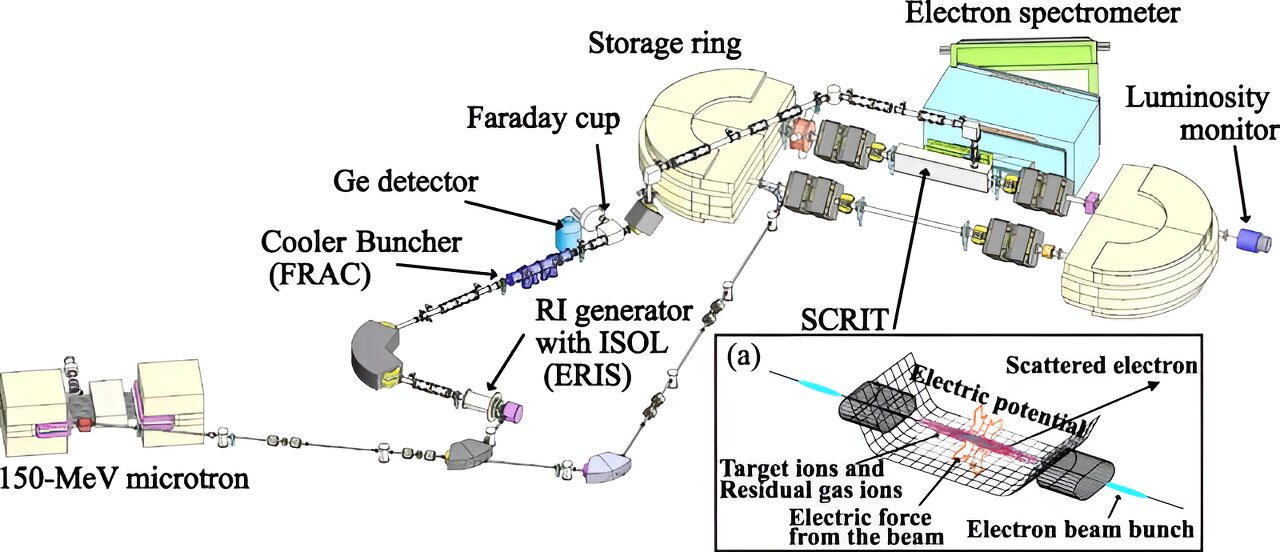A team of chemists and physicists from Kyoto University, the Nishina Center for Accelerator-Based Science, RIKEN, Rikkyo University, and Tohoku University in Japan has made a groundbreaking observation. They have successfully observed electron scattering from radioisotopes that do not occur naturally. The study has been published in the journal Physical Review Letters.
Since the 1950s, scientists have been searching for ways to create images of atomic nuclei to gain a better understanding of their structure. This requires the development of a femtoscope, a device capable of imaging on the femtometer scale. The research team has now built a system that represents the realization of such a device.
The team started by using a particle accelerator to energize a group of electrons. These electrons were then directed to collide with a block of uranium carbide, resulting in the production of cesium-137 ions. The ions were then directed to a self-confining radioactive-isotope ion target (SCRIT) system.
The SCRIT system trapped the ions in a three-dimensional space aligned with an electron beam. This allowed for collisions between the ions and electrons in the beam. The researchers used a magnetic spectrometer to record the interference patterns that emerged, which served as a means of recording the electron scattering.
This is the first time that such scattering has been observed and recorded. It also opens up new avenues for research, as the same system can be used to study scattering with other types of nuclei, particularly those with short lifespans. The research team also highlights that their system has demonstrated the properties of a femtoscope, an oscilloscope operating on the femtometer scale. They suggest that it could eventually be used to develop a unified theory describing the structure of atomic nuclei.
2023-09-05 08:48:02
Article from phys.org




















